Inventorying Site Collections
Site Collection List
When first deployed, the Webtrends Tag Manager will need to obtain a list of Site Collections within your tenancy. The inventory process can look for all sites in the environment (matching the desired template list), or for specific sites using the search functionality found in v3 and above.
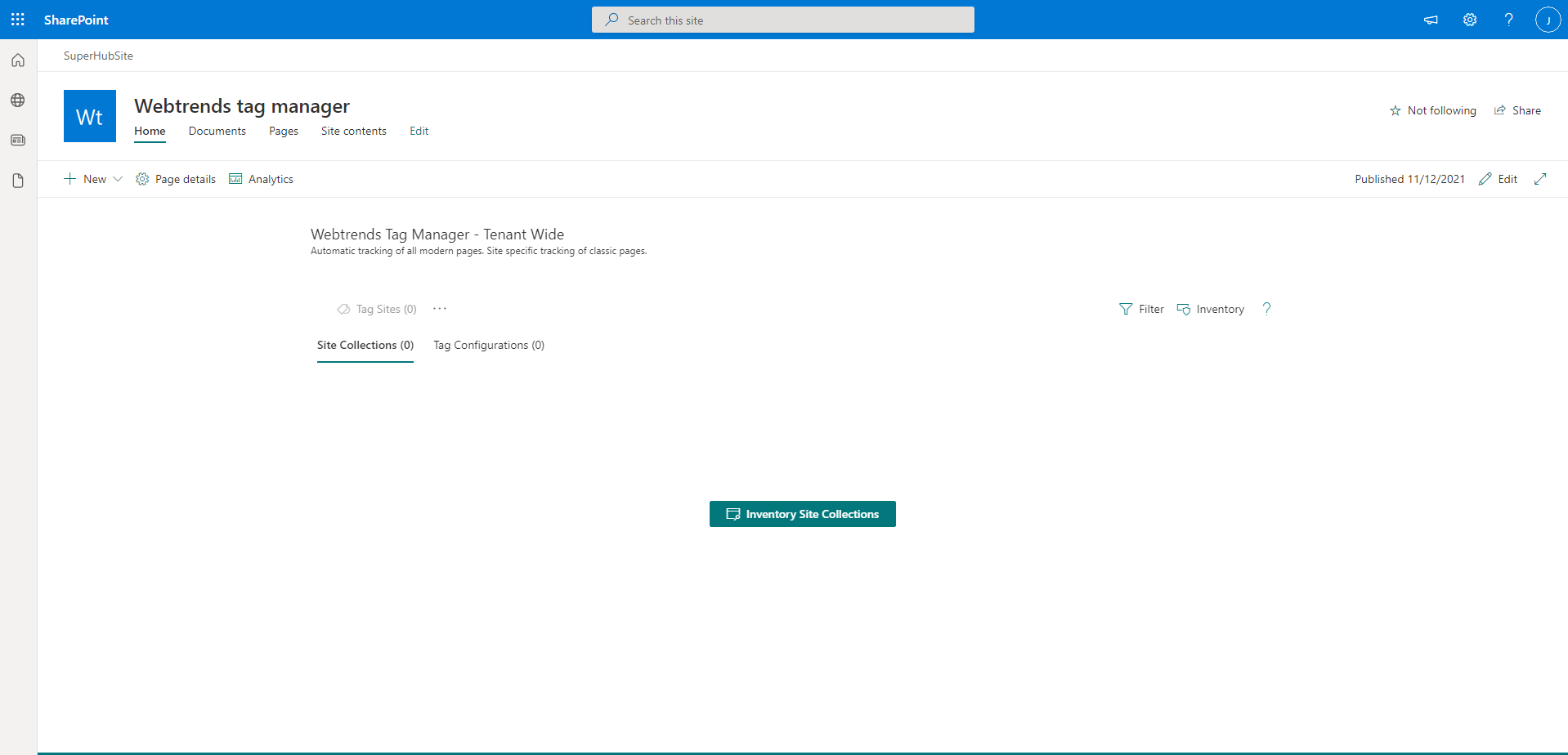
Click the Inventory Site Collections button in the center of the screen or the Inventory button in the upper right to open the Inventory Site Collections side panel.
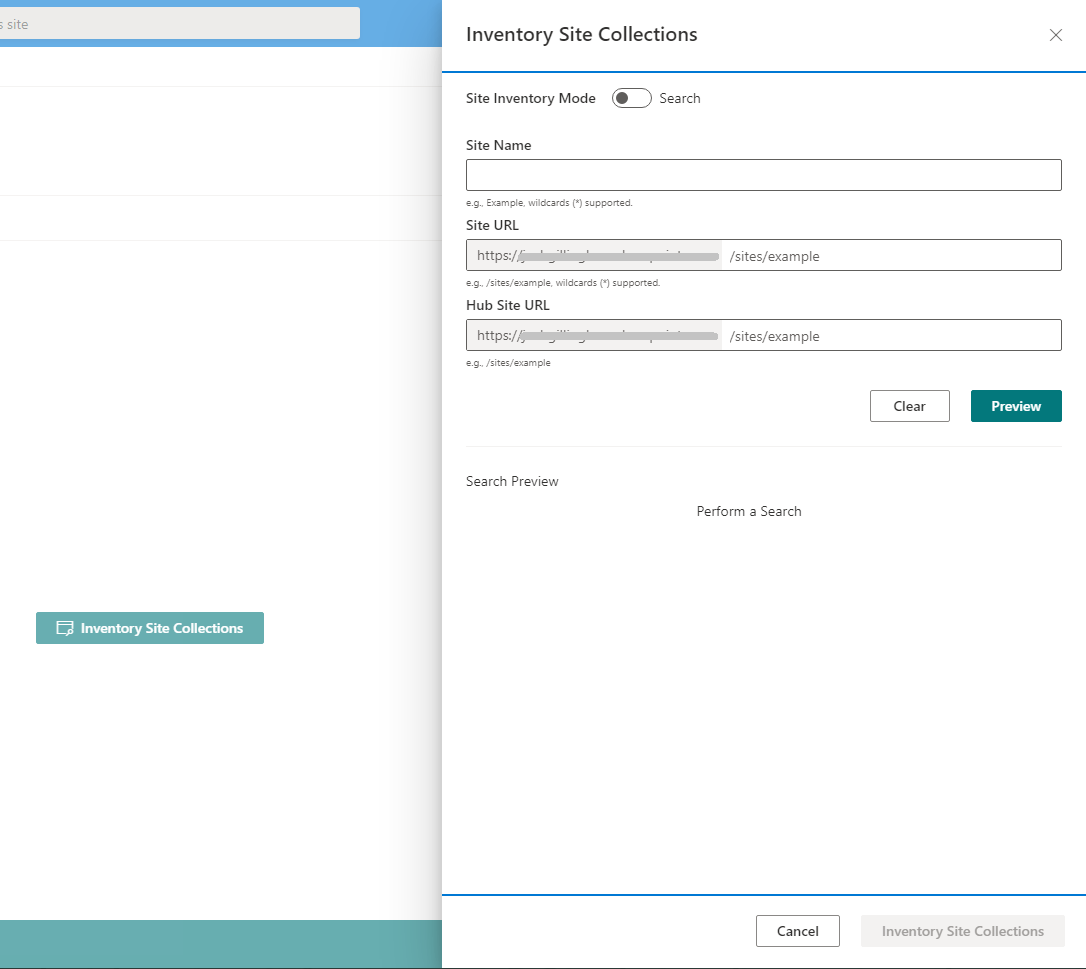
Inventory Site Collections Panel
Site Inventory Mode - If enabled in the web part configuration, you can choose between Search and All to inventory sites. If disabled in the web part configuration, the Site Inventory Mode toggle is not visible and Search mode is used.
All Mode
The Search form is disabled and Inventory Site Collections is enabled. Clicking the Inventory Site Collections button will query for all sites in the environment using * as the search term.
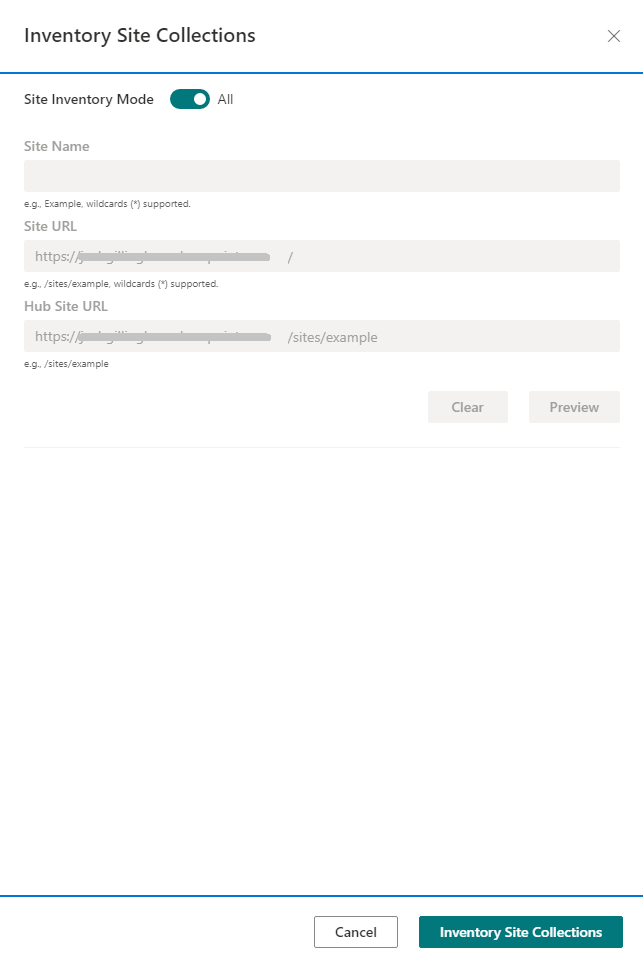
Search Mode
The Inventory Site Collections button is disabled. Clicking the Preview button will query for all sites that match the search criteria, as specified in the Site Name, Site URL, and Hub Site URL input fields. Clicking Inventory Site Collections becomes enabled after previewing results, and will inventory all sites found by the specified search query.
The 3 search fields use an AND operation to narrow the results.
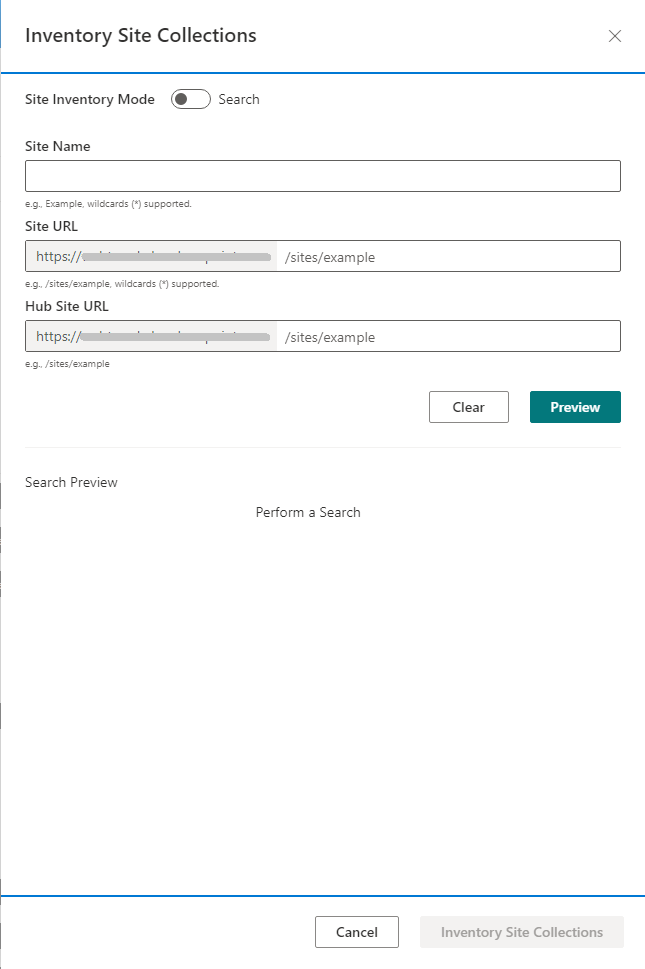
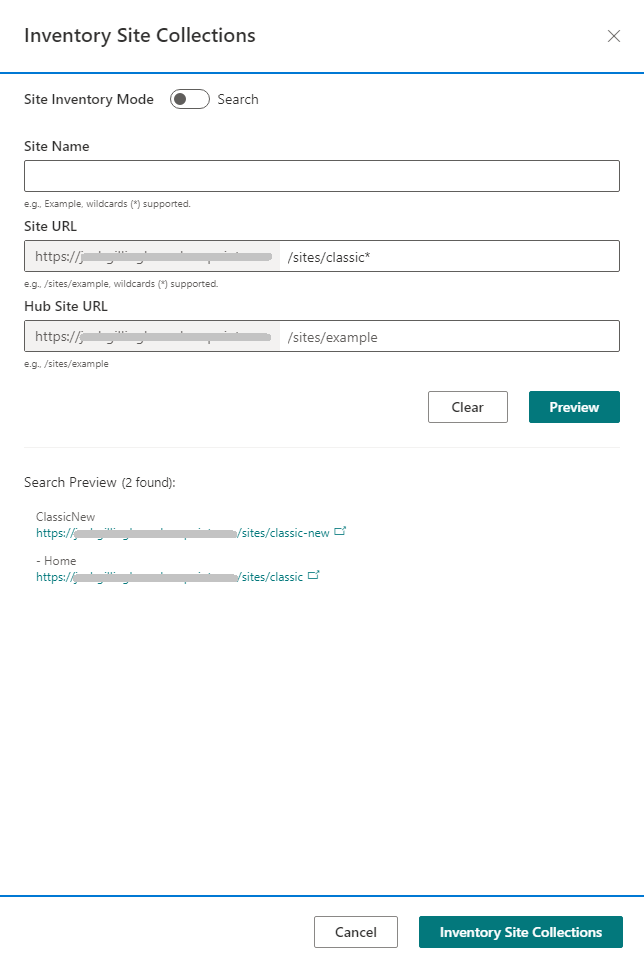
Search Form
-
Site Name - This input fields searches for all sites with a matching Title.
- Wildcards (*) are supported, e.g., Webtrends* will return the Webtrends Tag Manager site.
Note:Results are limited to the current Geo of the tenancy.
-
Site URL - This input fields searches for sites using the Relative Path specified.
- Wildcards (*) are supported, e.g., /sites/webtrends-tag* will return the /webtrends-tag-manager site.
Note:To search for the root site collection, use "/" as the value.
Note:The domain is automatically included in the search query.
Note:Results are limited to the current Geo of the tenancy.
-
Hub Site URL - This input fields searches for a single Hub Site using the Relative Path specified, then searches for all sites with the same Hub Site ID (Department ID) to provide the list of the hub and its spoke sites.
- Wilcards (*) are not supported. This requires an exact match for the hub site relative path. Searching for a spoke site will not return results. Search for the main hub site instead.
Note:The domain is automatically included in the search query.
Note:Results are limited to the current Geo of the tenancy.
-
Clear - This button clears all the input fields to perform a new search.
-
Preview - This button runs the search query and displays any matching results in the Search Preview section below.
- Search Preview - This section displays matching results for the search query and the number of results found using the specified criteria.
- The list of results shows the Title and URL of the site.
- The URL is clickable to open the site in a new tab.
- The list of results is scrollable.
Note:The preview for the list of sites is limited to the top 500 results, but the Inventory Site Collections query is not.
- Cancel - This closes the side panel without any further action.
- Inventory Site Collections - This queries for all matching sites (Search mode) or all sites (All mode) and populates the Site Collections list with the required data for each resulting site and closes the inventory panel.
As the Inventory Site Collections query completes, a list of sites will begin to appear in the web part UI.
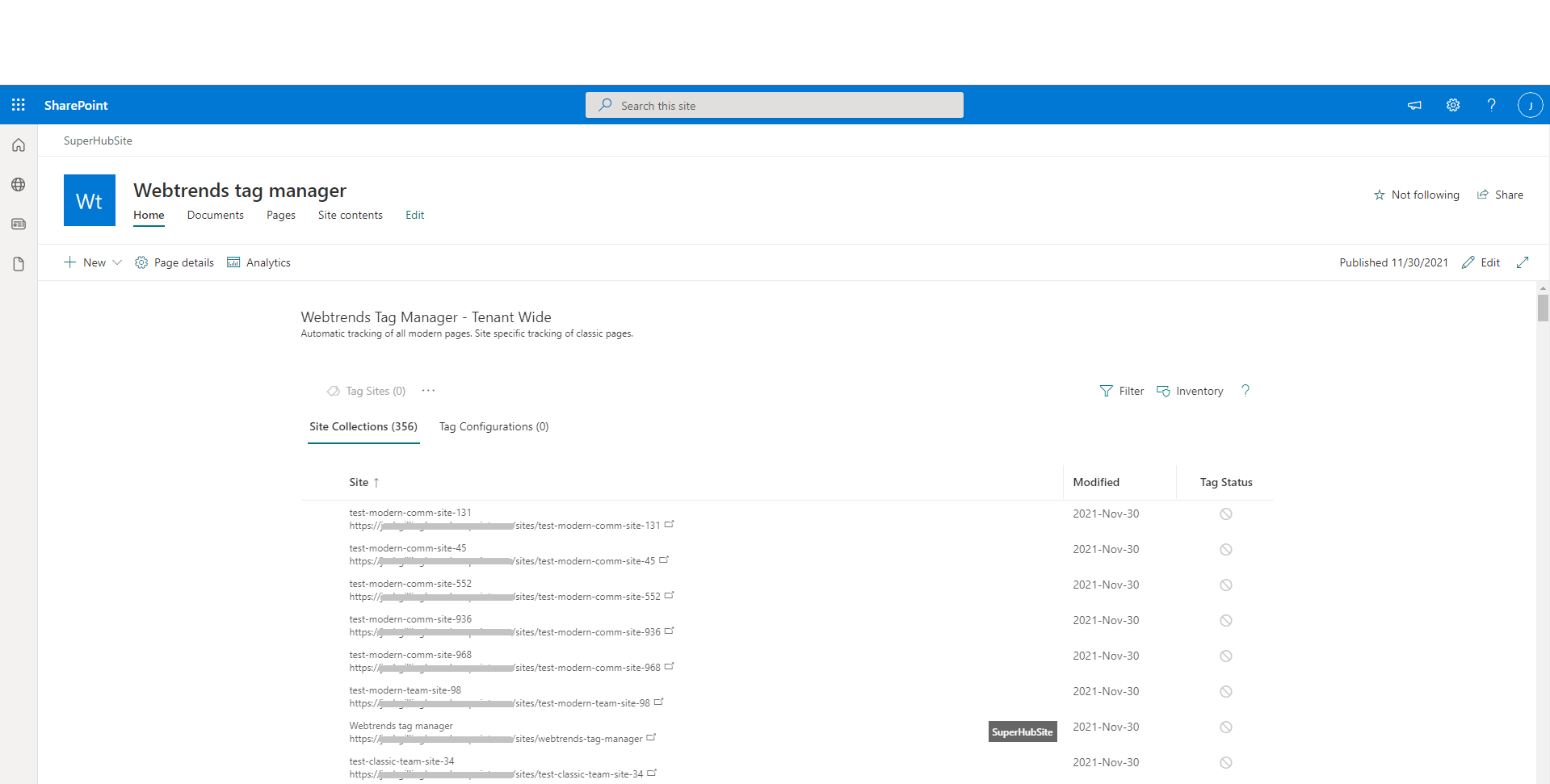
Depending on the size of the tenancy, searching for all sites may be a long running task. This task can be sped up or slowed down (to avoid throttling) using the web part configuration > API Config options.
The search API is used to obtain a list of site collections in the tenancy and collect metadata about each site. Therefore:
-
SP search must be configured to allow each site to be displayed within the results.
-
The user performing the inventory must have at least Site Visitor level permissions on each site to see it in the results.
-
Newly created sites may take at least 15 minutes to be indexed before they appear within the search results.
-
Each site must use an allowed template type.
- The allowed template types to query are now editable in the web part configuration > Site Inventory Templates list. Not all template types have been tested.
- Please contact Technical Support for assistance if you find a template type that causes an error.